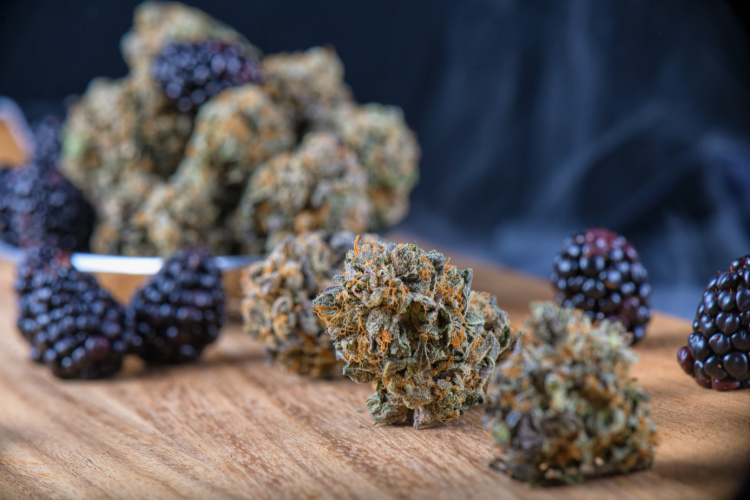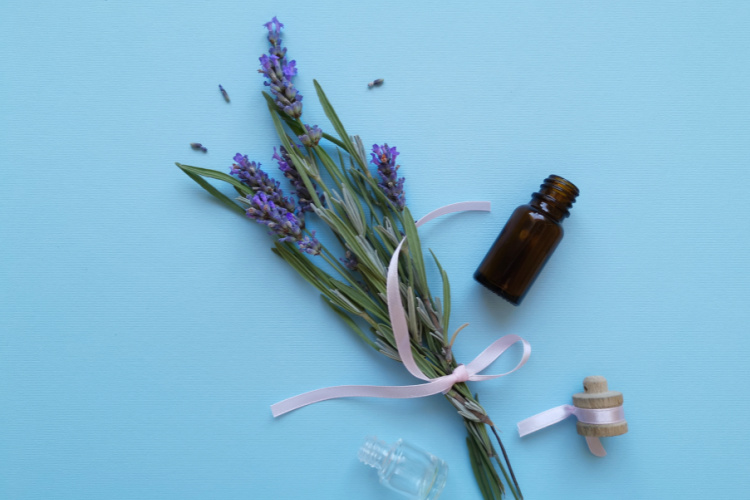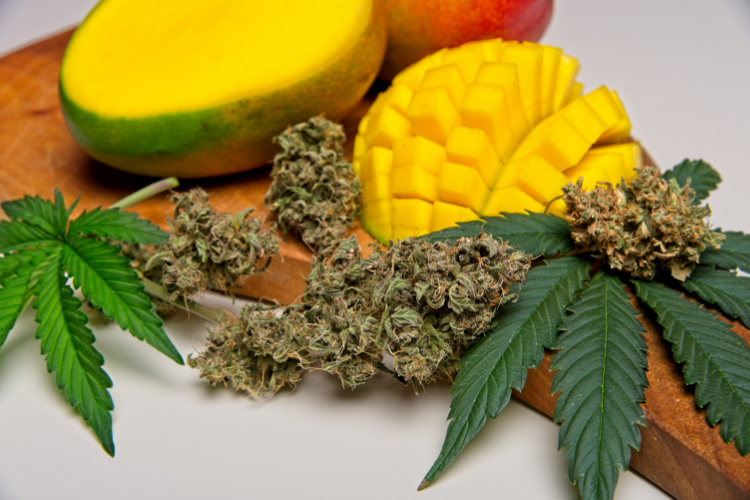If you’ve visited our blog before, you probably know we’re big on terpenes, the fragrant oils that give different strains of cannabis their individual qualities. When you detect beguiling scents—such as black pepper, lemon peel, or fresh pine—in cannabis, you’re really smelling their terpenes!
How in the world does a cannabis strain smell like a fresh citrus fruit? It’s because terpenes aren’t unique to cannabis. They occur in countless naturally-growing products—including fruits, herbs, trees, and even insects and animals. In fact, some botanists believe that terpenes are the largest and most diverse group of natural products on the planet!
In today’s article, we’ll keep the focus squarely on some of the most common terpenes found in cannabis. (There are at least 150 of them!) What are terpenes and what do they do? Get ready for a sensory journey deep into the world of the cannabis plant.

Introduction to Terpenes: The Cannabis Plant’s Distinctive Aromatic Powerhouses
Terpenes are aromatic hydrocarbons—that’s another term for “essential oils”—found in the cannabis plant. They’re produced and secreted by trichomes, the same tiny translucent glands that produce cannabinoids such as THC and CBD.
Unfortunately, terpenes are chemically fragile. As soon as cannabis plants are harvested for curing, their terpene contents begin to degrade. That’s one reason the cannabis concentrates known as “live resins” are so popular. Because they’re produced using cannabis that’s been flash-frozen immediately after harvest, they preserve a phenomenal amount of the plant’s natural terpenes. Some fans describe their flavor as being almost “hyperrealistic!”
What’s more, terpenes do much more than simply add enticing flavors and aromas to your cannabis. Research suggests that terpenes work with cannabinoids in what’s termed an “ensemble effect” to produce specific therapeutic effects. While the effect is still largely theoretical, there’s a growing body of evidence supporting the research, and we expect future cannabis-based treatments to take advantage of this phenomenon.
To this end, many producers of cannabis concentrates are already extracting and blending terpenes with the goal of producing more precisely-targeted sensory and medical effects. Together with our dawning understanding of the Endocannabinoid System, they may well represent a new frontier in cannabis.

What Are Terpenes? A Guided Tour of the Cannabis Plant’s “Top Five”
As we referenced a moment ago, there are a lot of terpenes in cannabis! So, to keep things manageable, let us offer you a personal introduction to the cannabis plant’s “Top Five” terpenes.
#1
Myrcene: If THC is the most abundant cannabinoid in cannabis, myrcene is the plant’s most abundant terpene. Characterized by a fruity, almost grapelike flavor, research suggests that myrcene may impart a gentle sedative effect. Some researchers believe it contributes to some strains’ notorious “couch lock” effect, though that’s still being researched. What isn’t up for debate is that this principal terpene may synergize and potentiate the actions of other terpenes and cannabinoids, making it a key player in the ecosystem of the cannabis plant.
In addition to occurring in cannabis, myrcene is found in mangoes. That may be why some people insist that if you eat a mango about 45 minutes before ingesting cannabis, you’ll enjoy an especially intense and long-lasting intoxicating effect. Could it really be true? There’s only one way to find out…
Myrcene-rich strains include: Skunk XL, White Widow, and Special Kush
#2
Alpha-pinene and Beta-pinene: Known collectively as “pinene,” these close relatives emit a distinctively piney aroma. Unsurprisingly, you’ll also find this terpene in pine trees, orange peels, and herbs such as basil and rosemary.
Some studies suggest that pinene exhibits a gentle anti-inflammatory effect. That’s why—even when inhaled—pinene-rich strains can help reduce inflammatory responses.
Pinene-rich strains include: Jack Herer, Strawberry Cough, Blue Dream, and Dutch Treat
#3
Caryophyllene: Spicy, peppery, and unforgettable—some research suggest that this terpene exhibits powerful analgesic and anxiety-fighting properties. And thanks to an unusual molecular structure, which allows it to bind more readily than many other terpenes, it’s a key ingredient in some anti-inflammatory topicals and creams.
Caryophyllene-rich strains include: Super Silver Haze, OG Kush, and Rock Star
#4
Limonene: A bright and cheerful-smelling terpene, limonene adds general uplift and mood-lightening effects to many strains of cannabis, as well as foods, cosmetics, and even household cleaning products. What’s more, some clinical studies suggest it may have the ability to reduce stress and anxiety.
Limonene-rich strains include: Sour Diesel, Super Lemon Haze, Durban Poison, and Jack Herer
#5
Linalool: Sure, you’re probably familiar with the classic “cannabis smell.” But did you know that this signature scent comes mainly from linalool? This terpene also occurs in lavender, among many other plants. Studies show that it may help fight anxiety and depression by imparting generalized relaxing sensations. Beyond that, preliminary studies on mice suggest that this important terpene might help reverse the cognitive impairment and memory loss caused by neurodegenerative disorders such as Alzheimer’s.
Linalool-rich strains include: Amnesia Haze, Special Kush, Lavender, LA Confidential, and OG Shark

What Are Terpenes? Wrapping It Up
As we hope today’s article has made clear, there’s a lot more to terpenes than just those alluring aromas and tastes! If you’re interested in learning more about these fascinating natural oils, continue your education here. And if you have any questions about terpenes—or any other cannabis-related topics—just ask. We’re here to help!
Please note that qualifying conditions vary by state, and the information relating to qualifying conditions may not apply to cannabis patients in all states.
Product availability also varies based on state program restrictions and rules, so the products discussed may not be available in all states. Be sure to check with your local Green Goods location about the products available in your state!
